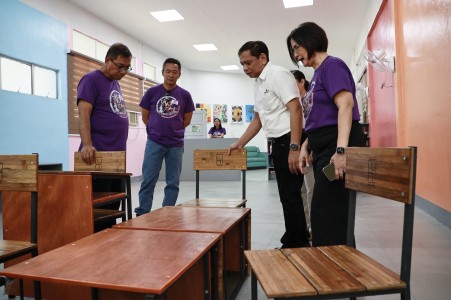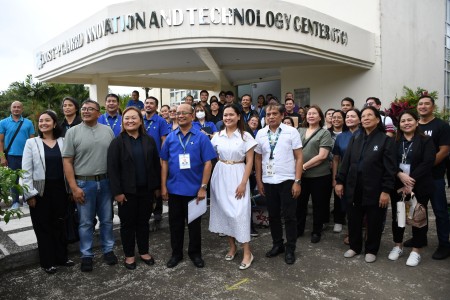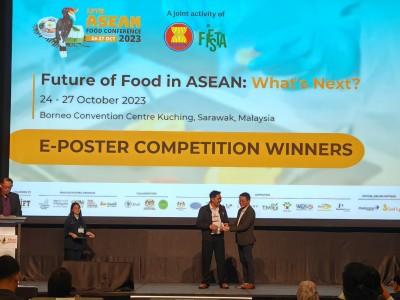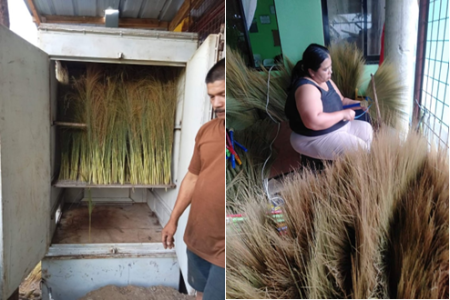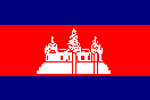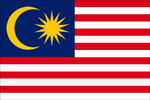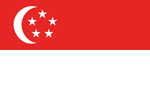Conventional Weathering Testing at Forest Product Research and Development, Bogor | 31/12/2016
P3HH, Bogor (7/12/2016)_There are various wood properties which leads to wood processing, such as anatomical and fiber properties, physical and mechanical, chemical content, durability against organisms, treatability, sawing, machining, drying, plywood, pulp and paper as well as weathering tests. Weathering properties is wood characteristic after outdoor exposure includes UV sunlight exposure, rain water, condensation and fluctuative temperature and humidity. Weathering properties is important information to qualify the use of timber outdoor such as garden chair, wooden gazebo and roof construction which is directly connected to outdoor condition.
Accelerated weathering test has been developed globally by controlling weather condition inspecific chamber. Conventional weathering test information is also important to provide real weather condition test in specific time and specific location. In early 2016, Forest Product Research and Develpment Center developed conventional weathering test for wood as part of wood basic properties research. Weathering test is conducted according to American Society for Testing and Materials (ASTM) D 358-98 about Standard Specification for Wood to Be Used as Panels in Weathering Tests of Coatings, wood material quality is tested to meet ASTM D 661-93 about Standard Test Method for Evaluating Degree of Cracking of Exterior Paintsand ASTM D 3274-95 on Standard Test Method for Evaluating Degree of Surface Disfigurement of Paint Films by Microbial (Fungal or Algal) Growth or Soil and Dirt Accumulation.
Weathering test is conducted outdoor, in vertical hanging position. Observation is conducted in a one year to represent dry months and wet months. Observation is conducted visually every month on cracking, fungus and bacteria attacks. Observation is also conducted on colour change during test on wood finishing discoloration. Defect free wood plank in dimension of 30 x 15 x 2 cm is air-dried into 20% moisture content (even air dry), then it is sanded for smooth surfaces. Samples were then grouped into three based on the finishing treatment: Ultran Lasur UV, Ultran Politur P-03 UV and control. After finishing, wood samples were conditioned in clean and dust free room for about 1 week prior to weather exposure (Darmawan dan Purba, 2009).
Wood samples were evaluated based on defect percentage caused by microbe and cracking. Microbe attack is indicated by dark spot on the wood finishing surfaces. Evaluation is conducted by comparing initial condition of samples and after exposure. Wood samples were observed according to defect percentage as mentioned in ASTM D 3274-95 and D661-93 as shown in Table 1.
Table 1.Microbial and cracking rating on wood finishing surfaces
|
Microbial and cracking rating |
Wood finishing defects caused by microbe and cracking (%) |
|
0 1 2 3 4 5 6 7 8 9 10 |
100 90 80 70 60 50 40 30 20 10 0 |
Wood color differences are measured using PRECISE COLOR READER WR-10 D65 10° based on CIELab (Commission International de l’Eclairage (CIE) 1976 (L*,a*, b*)system. Wood color value is measured in three ordinats of L* which means Lightness, 100 = white – 0 = absolute black), a*is reddish value (+a* = red, -a* = green) and b*is yellowish value (+b* = yellow, -b* = blue) (Sugiyanto, 2011). Color difference (DE*) is calculated based on formula as follows.
DL* = L*I – L*f
Da* = a*I – a*f
Db* = b*I – b*f
∆E= /∆L2 +∆a2 +∆b2
Where:
L*I = initial ligthness value (i), L*f= final lightness value (f); a*I = initial reddish value (i), a*f= final reddish value (f); b*I = initial yellowish value (i), b*f= final yellowish value (f); DE* =color differences.

Figure 1. Weathering test at Jl. Gunung Batu 5, Bogor
.jpg)
.jpg)
.jpg)
Figure 2. Color comparison of meranti bunga wood before exposure (A), and after 1 and 2 month exposure using ultra lasur (B) and P03 UV (C)
During two months observation, there are crackingoccurs in the five wood sample species, except pasak linggo. Cracking occurs in the first month observation and accumulatively measured to provide one year cracking sequent (Figure 3A). Fungus and bacteria attacks is visually detected in mempisang wood in the first month observation and spreaded in the second months of observation (Figure 3B). Two months observation shows cracking percentage and fungus attacked area were less than 10%, then further observation is conducted to provide one year observation.
new.jpg)
References
Darmawan, W. dan Purba, I.I. 2009.Daya tahan lapisan finishing eksterior beberapa jenis kayu terhadap pengaruh cuaca. Jurnal Ilmu dan Teknologi Hasil Hutan 2(1):1-8.
(ASTM) American Society for Testing Materials. 1993. ASTM D 661-93: Standard Test Method for Evaluating Degree of Cracking of Exterior Paints. West Conshohocken.
(ASTM) American Society for Testing Materials. 1995. ASTM D 3274-95: Standard Test Method for Evaluating Degree of Surface Disfigurement of Paint Films by Microbial (Fungal or Algal) Growth or Soil and Dirt Accumulation. West Conshohocken.
(ASTM) American Society for Testing Materials. 1998. ASTM D 358-98: Standard Specification for Wood to Be Used as Panels in Weathering Tests of Coatings. West Conshohocken.
Krisdianto, Malik, J., Balfas, J. 2005. Penyempurnaan sifat dan kegunaan kayu mangium. Laporan Hasil Penelitian. Puslitbang Teknologi Hasil Hutan, Balitbanghut.
Sugiyanto, K. 2011. Physical and mechanical modification of the bamboo species (Dendrocalamus asper). PhD Thesis, The University of Melbourne.
Written by : Dr. Krisdianto
Translator: Dr Krisdianto


